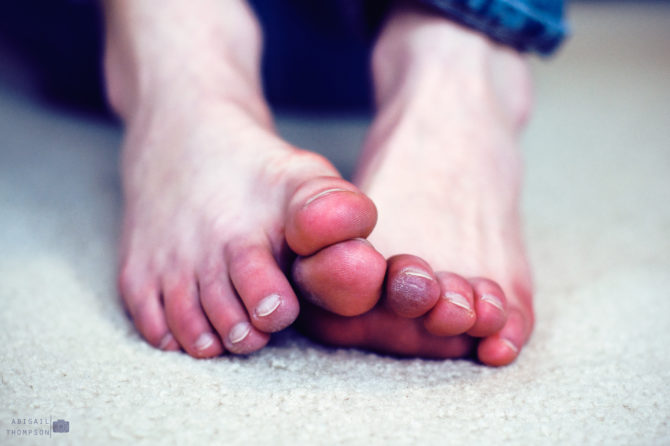
Prevent Frostbite on Feet & Toes
It’s still winter and you still need to be wary of all that comes with it, specifically frostbite. There are no solid statistics on how many people are treated for frostnip or frostbite every year, but you can bet that it’s quite a few. Exposure to temperatures even as high as 40 degrees with minimal wind chill can bring on the early stages of frostbite in just 30 minutes. It should be obvious that frostbite happens when your skin is exposed to cold temperatures without adequate protection. Most commonly affected are the toes, fingers, nose, and lips. There is a lot to know about frostbite, but let’s just stick with the basics.
How does frostbite occur?
When your body gets cold, your blood vessels constrict and limit blood flow to your extremities, diverting the much-needed blood to maintain the temperature and function of your core organs. As this happens, the skin and tissues of your feet and hands have no ability to re-warm themselves after becoming chilled by the ambient conditions.
How bad is frostbite?
The severity of frostbite is classified in degrees (1st-degree frostbite, etc.) with fourth-degree frostbite being the most dangerous. Your particular degree of frostbite is determined by how much of the skin and tissue has been frozen and how long it has stayed frozen. During 1st and 2nd-degree frostbite, the affected area becomes white or pale and painful, often with a pins-and-needles or burning feeling. Numbness can set in quickly. When pressed, the skin will show some resistance. This is called superficial frostbite. 3rd and 4th-degree frostbite, also known as deep frostbite, results in complete loss of feeling in the affected area. You will also experience swelling and white or yellowish skin that turns black or purple upon re-warming. When touched, the skin will feel solid.
What happens if I get frostbite?
If you think you have frostbite (or even frostnip!), you need to immediately seek emergency medical attention. Every minute of lost warmth could mean permanent damage to skin and tissues and even result in the need for amputation. While you are waiting for emergency care, remove any wet or restrictive clothing and wrap the extremity loosely in a blanket. Do not place the area on or over any direct heat sources such as radiators or fires. Avoid refreezing at all costs!! At the hospital, doctors will re-warm the area rapidly in a hot water immersion, apply aloe vera, then wrap and elevate the area. A hospital stay of a few days can be expected, even in mild cases.
How do I prevent frostbite?
Preventing frostbite is easy if you just stay indoors when it’s cold out. However, this isn’t always a possibility. If you do need to go out into the cold, make sure you are properly dressed in loose layers. Warm socks (sweat-wicking preferable), mittens, scarves, and hats will help protect the most at-risk areas of the body. If any of your clothing (especially your socks) becomes damp or wet, seek warmth and remove them immediately.
Who is most at risk for frostbite?
Children tend to lose body heat faster than adults, so watch them closely and limit their time outdoors. People with circulatory issues (the elderly, diabetics, etc.) need to be particularly careful and attentive. Although children and senior citizens have the highest risk factors for frostbite, most cases actually affect men ages 25-40. This is most likely due to the large homeless population in the United States. So, the next time you go out to buy your family socks to keep them warm this winter, pick up an extra pack to donate. Someone else’s toes will thank you for it.
Leave a reply